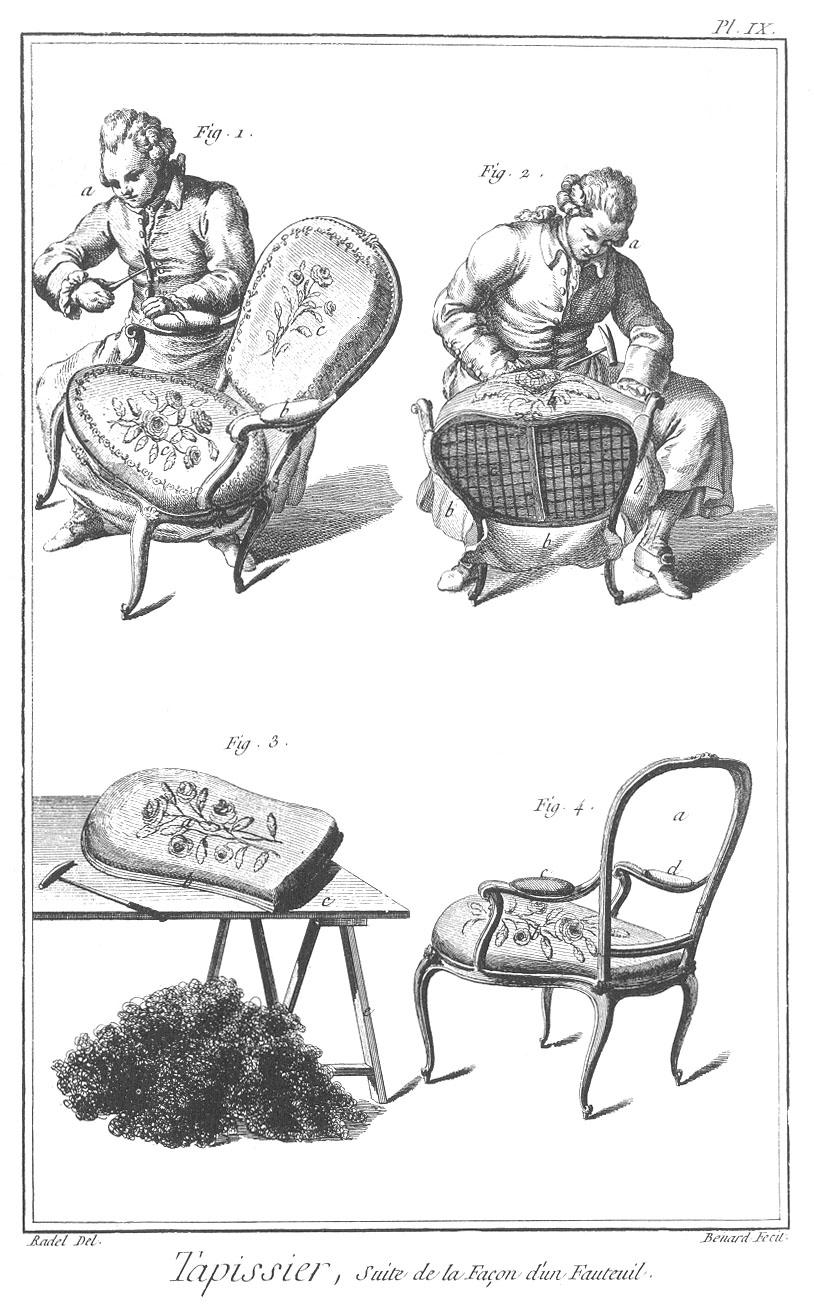
“Tapissier, plate 8, page 26:12:2,” from Encyclopédie, ou dictionnaire raisonné des sciences, des arts et des métiers, etc., eds. Denis Diderot and Jean le Rond D’Alembert. University of Chicago: ARTFL Encyclopédie Project (Spring 2011 Edition), Robert Morrissey (ed), http://encyclopedie.uchicago.edu/.
Upholstery is the work required to set up seat furniture with padding, springs, webbing, and fabric covers. Unlike the English upholsterers, the French applied a special technique of webbing where the webs were placed so close to one another that “there is no point at which daylight can enter.”[1] In positioning the webs tightly together, horsehair could be placed directly on top of the webbing. Horsehair was located primarily in the front and the middle of the seat, where substantial resiliency was most needed to avoid wearing out. [2]
The horsehair was then covered and stitched together with linen so that it would not move with use. Once this stage was completed, the seat was covered with the desired fabric, which was secured with tacks. Stretching out the material over the surface of the chair was the final step, necessary for eliminating creases and aligning flower designs.[3] The fauteuil à la reine armchair would not have remained in tack if not for this last part of the upholstery process.
The meticulous work that went into upholstery paints a larger picture of the obsession with interior design in 18th century France. So much attention was directed towards details of a room’s furnishings at the time. The concern for detail is apparent in the upholstery of the fauteuil à la reine armchair, where braids, fringes, and tassels hide functional items, like tacks, and also provide a decorative finish to the furniture piece.[4]
Return to: Making the Chair Next: The Final Product!!
[1] Munger, Jeffrey. “French Upholstery Practices of the 18th Century.” In Upholstery in America & Europe: From the Seventeenth Century to World War I. New York: W. W. Norton & Company, (1987), pp 122.
[2] ibid.
[3] Munger, Jeffrey. “French Upholstery Practices of the 18th Century,” pp 122- 123.
[4]Munger, Jeffrey. “French Upholstery Practices of the 18th Century,” pp 121.